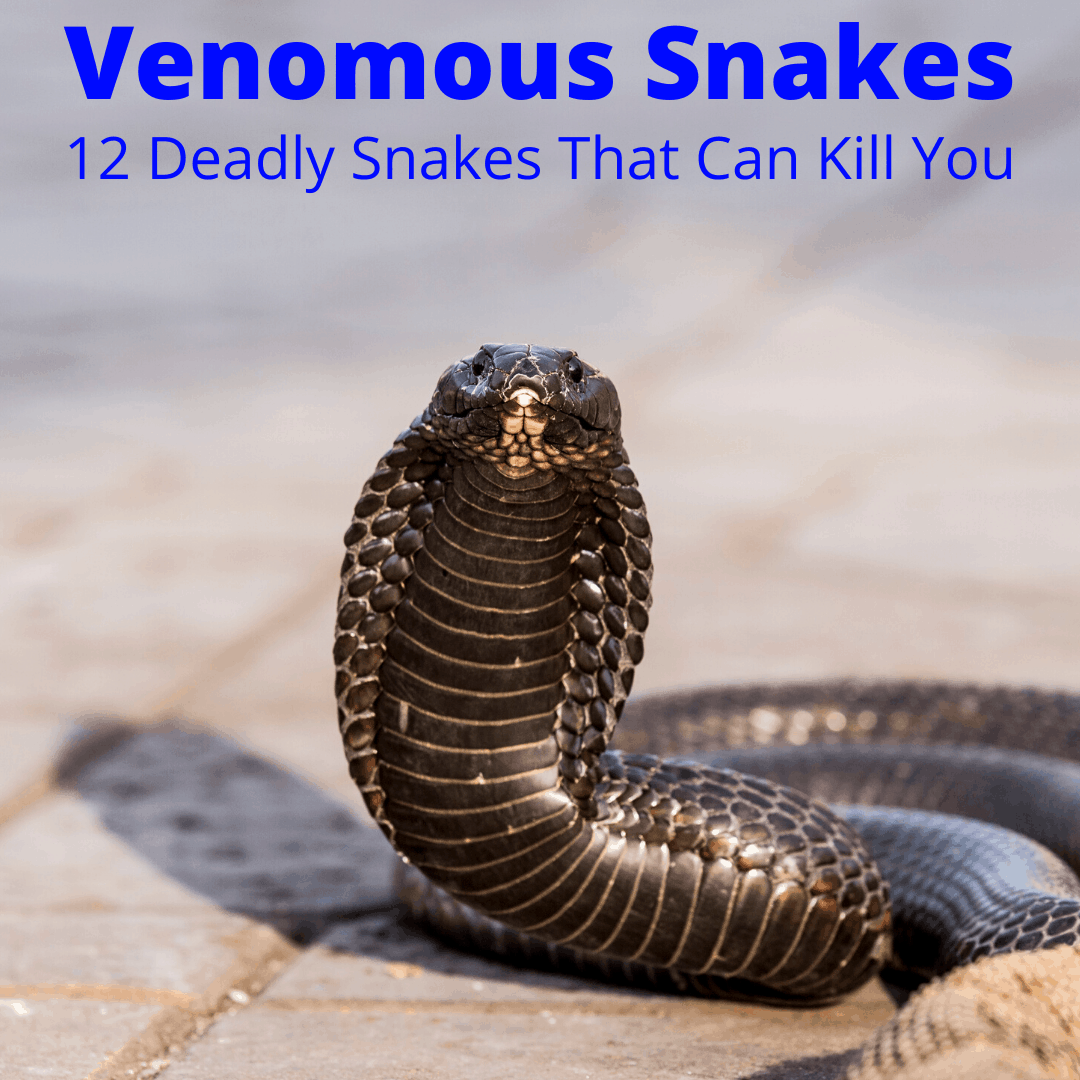
And that is even more true for venomous snakes.
Most people are deathly afraid of encountering a deadly snake. But the truth is: the snake is even more afraid of that encounter than we are.
For the most part, they want to avoid us. They do not want a confrontation.
They also simply don’t want to waste their venom on us, when it can be put to much better use procuring food.
But if they feel threatened and see no other way out of the situation, they will attack. And when certain species attack, it means almost certain death, unless the bite is treated quickly.
The following are some of the most venomous snakes on earth. A bite from any of these deadly snakes can be fatal.
Table of Contents
Venomous Snakes
Did you know that of around 2500 families of snakes in the world, only about 50 are deadly? So next time you see a snake, don’t be scared. Chances are it’s harmless. Unless you’re in Australia. Then it could easily be one of the deadliest snakes on earth.
Aggressiveness and the amount and potency of the venom are the two major factors considered in deciding how deadly or dangerous a snake is. Here are some of the most venomous snakes in the world.
Inland Taipan
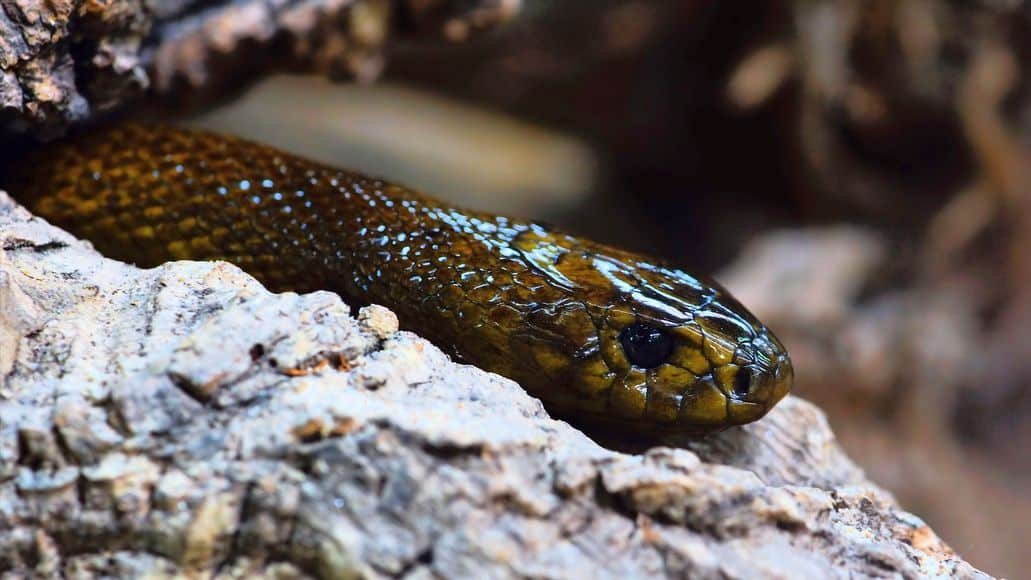
The inland taipan has a color palette of just dark hues of brown, grey and black. It is native to Australia and famous for its fast-acting venom.
It is known as the most venomous snake in the world. Based purely on the potency of its venom, this is the most dangerous snake on earth. A bit can kill a human in under 30 minutes, if untreated.
Luckily, this snake rarely strikes or bites. It is generally shy or withdrawn. It only strikes when it senses danger, feels provoked or is trying to get out of danger.
For this reason, and because they mostly live far from human settlements, there are few reports of attacks on humans. Most reports of attacks come from people who handle them directly.
The inland taipan differs from most other species of snakes in that it prefers to hunt mammals as a means of living. Its counterparts would rather stick to reptiles, rodents, and insects for their meals.
Eastern Brown Snake
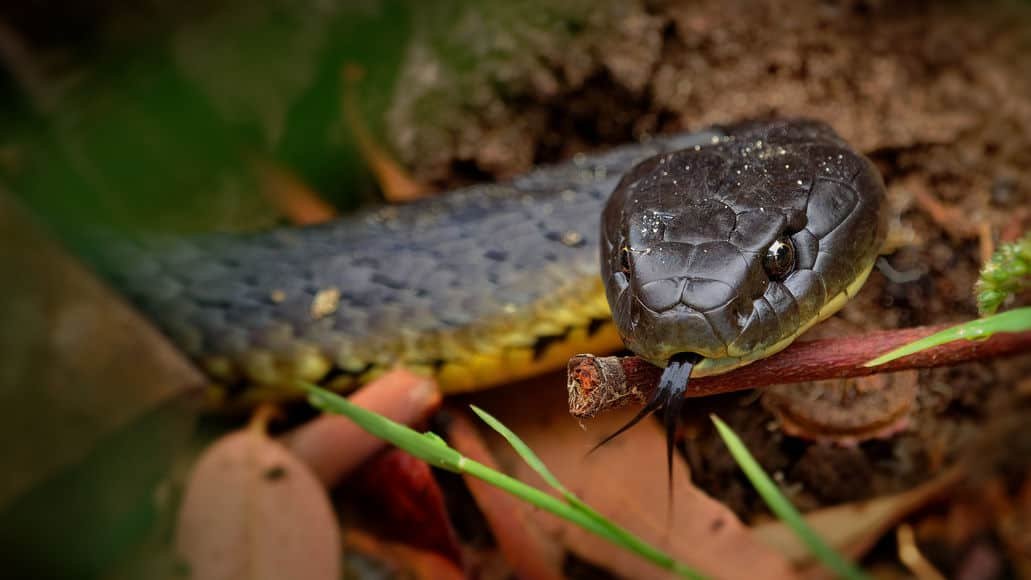
Also referred to as the common brown snake, the Eastern brown snake is one of the notorious species in Australia and New Guinea. With an average length of 7 feet, this species is reported to have caused over half of the deaths by snake bite in Australia.
There are several reason that combine to make them one of the world’s most dangerous snakes. They have a very powerful and fast-acting venom. They live near human settlements and are usually up and about during the day, increasing the likelihood of human contact. And they are aggressive.
That being said, the Eastern brown snake is more likely to withdraw when it notices any sort of disturbance. It only attacks during a confrontation, or when it feels cornered.
The trouble is that the Eastern brown snake, often only notices your presence when you are quite close, which startles them and leads to an attack.
If the environment is cloudy, or you are walking slowly, this species will not notice you until you are very close. The Eastern brown snake will only notice you from afar if you are wearing dark clothes or are walking briskly.
This snake has an interesting attack pose. It can raise the front half of its body to a vertical shape and launch an attack at your thigh. As a result, boots won’t protect you. Their bite penetrates regular rubber boots anyway.
The Eastern brown snakes have been found to be most aggressive during their mating season, especially the males. It takes them about two and a half years to reach maturity, and they have an average lifespan of about 15 years.
Saw-Scaled Viper
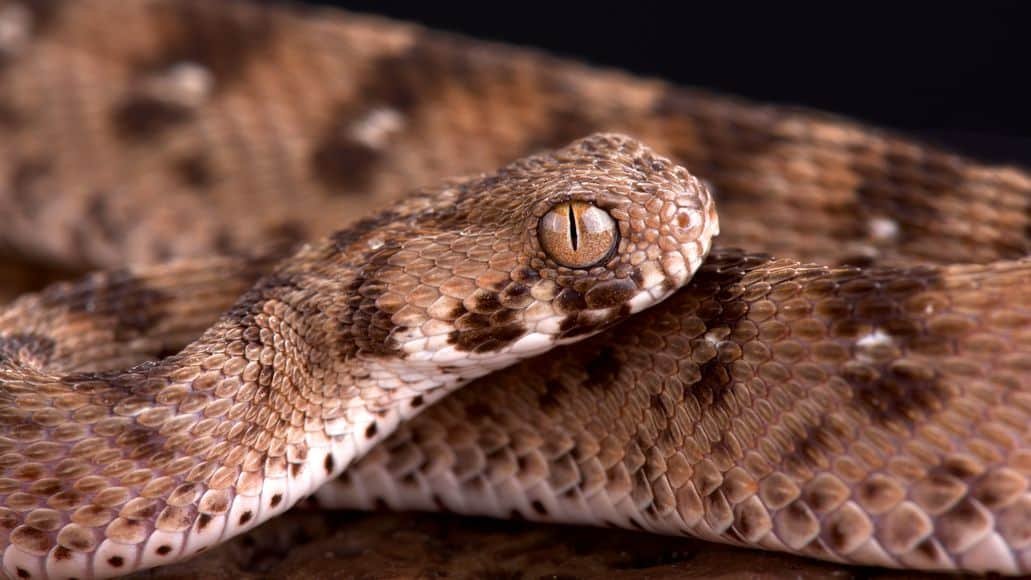
Saw-scaled vipers, also known as the carpet vipers, are venomous snakes that are very common in regions of North Africa, the Middle East and parts of India. They are responsible for most snakebite deaths in the world.
Perhaps the most remarkable characteristic of this species is the manner with which they send a warning signal prior to their attack. They make a sound that closely resembles hissing, but a little more intense.
They do this by arranging their body so that they can rub different parts against each other. The sound produced sounds a lot like trickling water on a dry, hot surface. This is the position they strike from.
Coastal Taipan
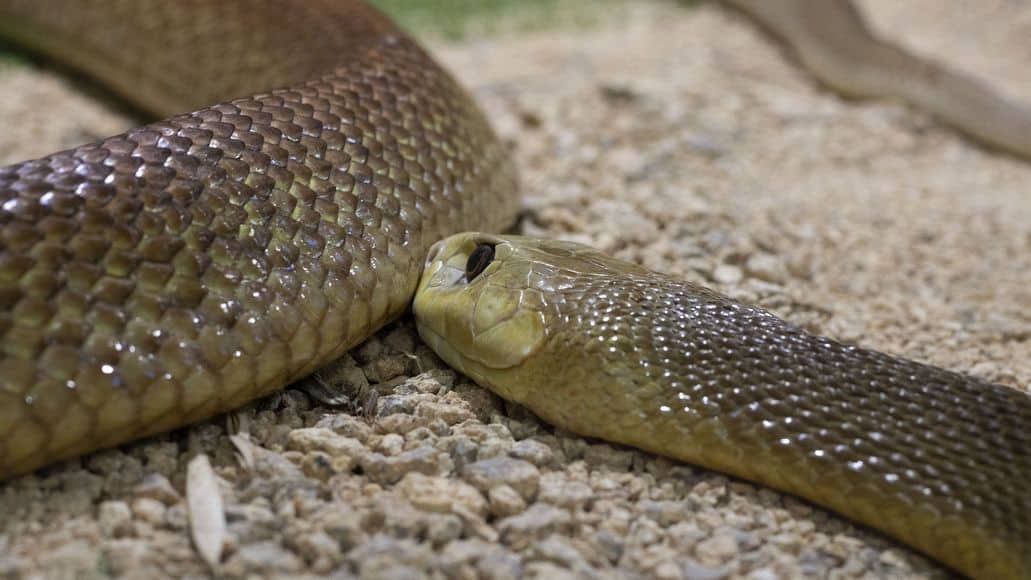
The coastal taipan is most commonly found in Australia and New Guinea. It is usually ranked among the top five snake species with the deadliest venoms. In 1949, an Aborigine survived a Coastal Taipan attack. The blood samples taken from him were reportedly pitch black.
These snakes are mostly active very early and become very passive in the afternoon. When it is especially hot out, they can be quite active at night.
Rather than rely on ground vibrations or a sense of smell, the Coastal Taipan hunts with its sharp eyesight. When moving and looking for prey, it glides on the ground with its head slightly raised.
When prey is spotted, the Taipan launches itself forward to deliver numerous bites on the victim’s body. The prey typically does not go very far before it collapses. Like other snakes with deadly venom, the Coastal Taipan avoids danger but will attack when confronted in close quarters.
Coral Snake
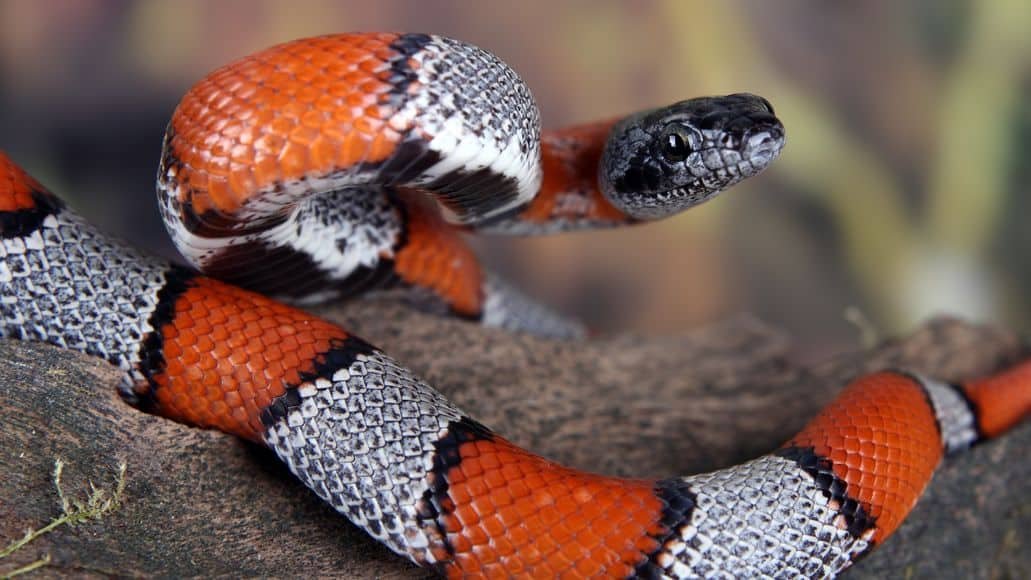
Coral snakes are common to the US and other parts of North America. The term “common” is used loosely here because there really aren’t that many of them, but the region is considered the natural home of this species.
The Coral Snake’s menu mostly limited to smaller reptiles, birds, and rodents. More often than not, they run away from perceived danger rather than attack.
With an average lifespan of 6 to 7 years, the coral snake is quite placid and withdrawn. It rarely attacks except when cornered, which explains why it is only responsible for only 10 snake bite incidents in every one thousand.
Incidents of coral snake attacks are very rarely reported. This is partly due to the fact that their natural habitats are generally far from human settlements. They prefer to live beneath the ground, or under the leaves on the forest floor.
Some coral snakes are aquatic too, favoring almost-still waters that have lots of plant growth. These particular species seem to lack some of the generally accepted features of venomous snakes worldwide.
Coral snakes are known to poison their victims with short fangs that have a permanent position in the front of the snake’s mouth. They are not retractable. The fangs are so short that they cannot effectively penetrate leather clothing.
Unlike some other snake species, the coral snake does not give several rapid bites. Instead, it bites once and holds on to the victim with its jaws so that the venom can sink in properly. A coral snake’s venom is slow acting, but very lethal—it can rupture the victim’s respiratory system.
There are a number of non-venomous snakes that resemble the coral snake. Mimicking the dangerous coral snake is their way of scaring off predators.
Boomslang
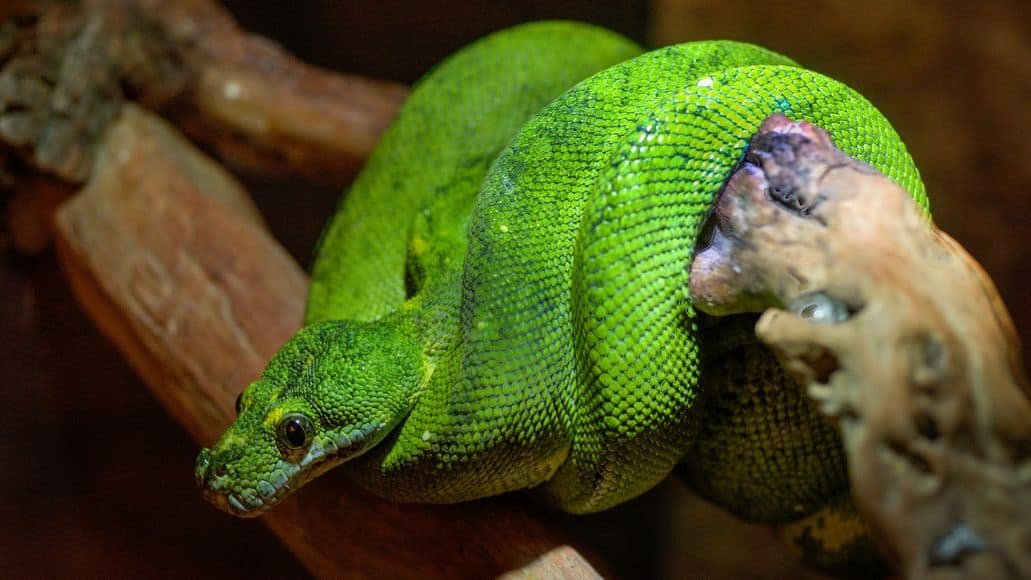
The name “boomslang” finds its origin from Afrikaans and Dutch. It literally means a tree snake. As that name implies, the boomslang feels most comfortable in trees.
For that reason, it is often categorized as an arboreal snake. Its menu consists of things that can be found readily in trees: bird eggs, birds and reptiles that hang out in trees.
When a boomslang bites, it releases hemotoxins into the victim’s body system. This prevents the blood from clotting and causes continuous bleeding, internally and externally.
Because it takes a considerable amount of time to feel the venom’s effect, it is possible that someone who has been bitten could think the bite is not so serious and fail to seek medical help.
Not all venomous snakes deliver their poison every time they bite. Sometimes, they merely bite without releasing any toxin into the bloodstream. You might think a boomslang bite was one of these.
The boomslang rarely attacks without provocation. In fact, most snakebite scenarios occur when people are trying to kill or capture it, or when it’s mishandled. When it is about to attack, the boomslang shapes itself like an “S” and swells in the neck region.
Beaked Sea Snake
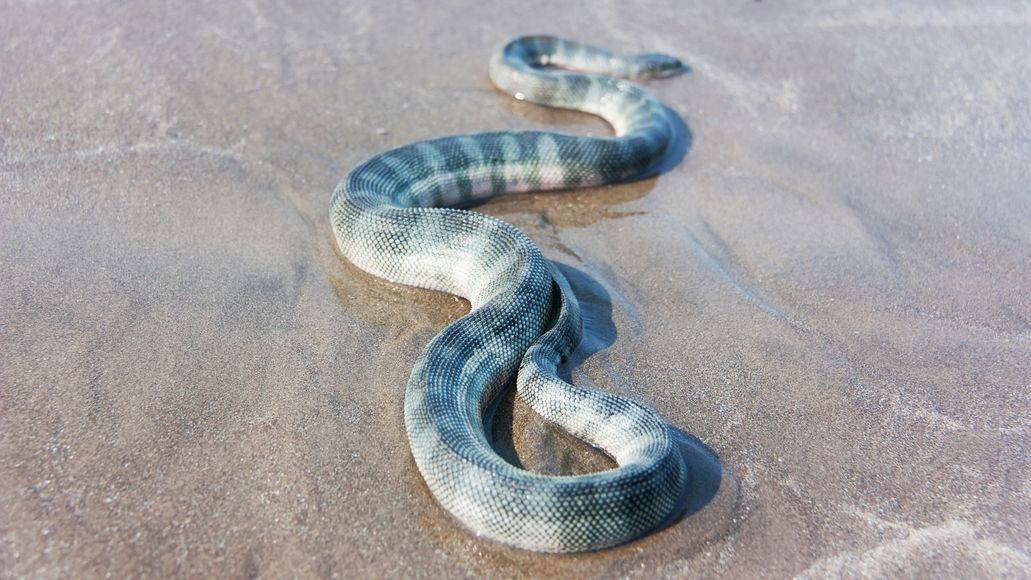
One of the most notorious sea snake families known, the Beaked Sea snake is reported as being responsible for more than half of sea snake bite incidents. The beaked sea snake is native to India and the areas along the sea in that region.
The beaked sea snake is not equipped to stay in the water for very long periods at a stretch, so it comes to the surface once every 5 hours or so. Its venom is deadly an it is an aggressive species and can launch an attack unprovoked. It feeds mainly on fish.
Mojave Rattlesnake
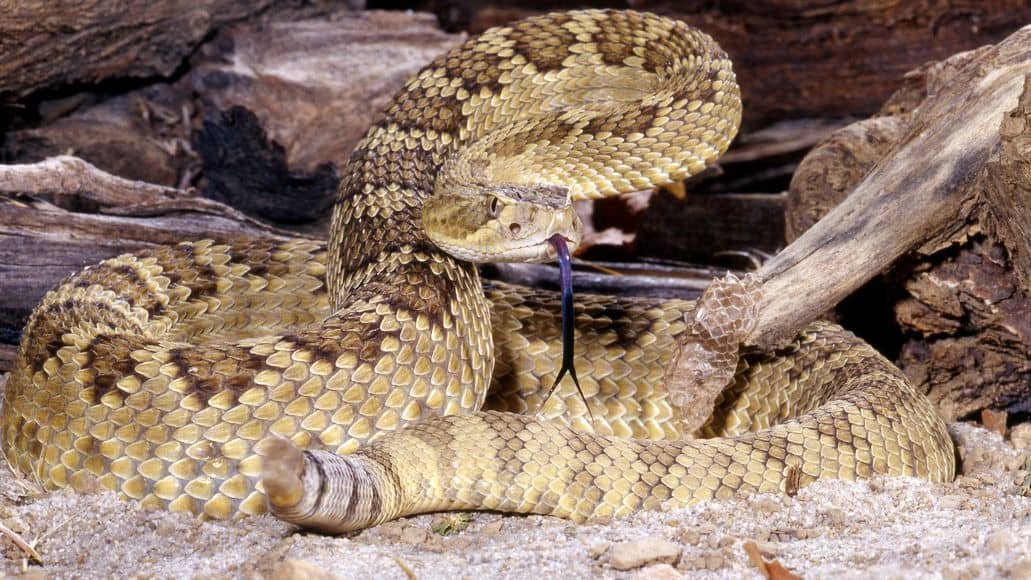
The Mojave rattlesnake, sometimes called the Mojave green, is native to parts of the US and Mexico. Its venom is the most dangerous of all rattlesnakes and one of the main differences when comparing the Mojave rattlesnake vs Western Diamondback.
Its menu consists mainly of small animals like rodents, small reptiles, and others. This rattlesnake species is active for half the year and goes into a passive mode for the other half. Another interesting fact is that the Mojave green gives birth to live young. It does not lay eggs.
Like all rattlesnakes, they make a rattle-like sound when agitated. This sound can be heard in a quiet environment. They also make this sound when they are about to launch an attack at a victim or defend themselves against a threat.
Their venom is slow-acting, therefore initial symptoms may not show up fast. You need to seek medical help immediately in the event of a bite, even if you feel fine.
However, deaths from Mojave bites are quite rare. Not that they don’t bite, but anti-venom is readily available when needed. Its venom attacks the skeletal muscles and can also affect eyesight.
Tiger Snake
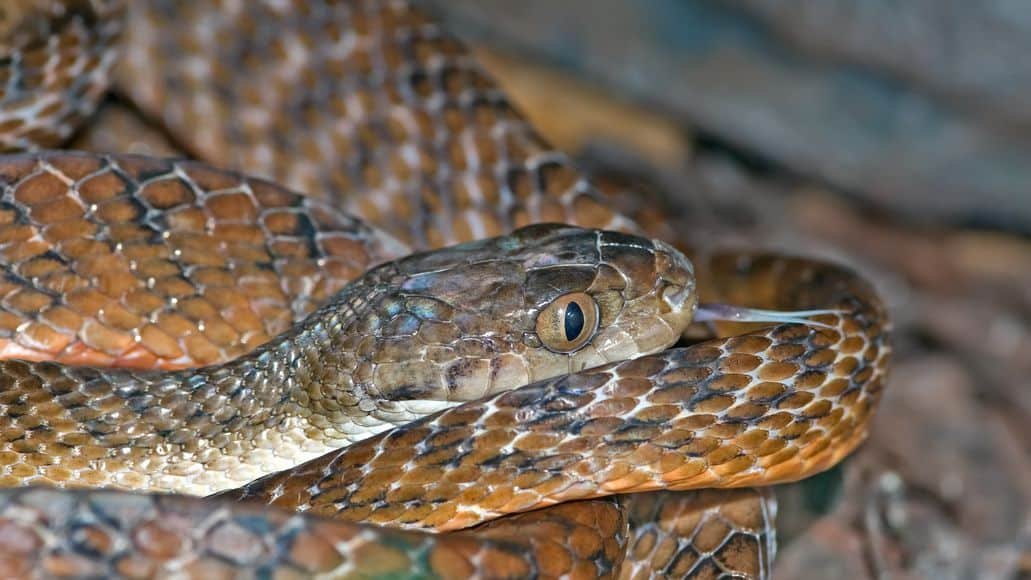
Tiger snakes are native to Southern Australia. They get their name from the color pattern on their bodies. There are different species of Tiger snakes, and they exhibit different characteristics. The following are attributes common to the whole family.
The Tiger snake has some notoriety in Australia, being responsible for roughly 15% of snakebites on the continent.
The venom secreted by Tiger snakes causes respiratory difficulties and paralysis, while initial effects of the bite include feet and neck pain and some feeling of numbness. If a Tiger snakebite is left untreated, the victim’s chances of survival are about 40%.
Egyptian Cobra
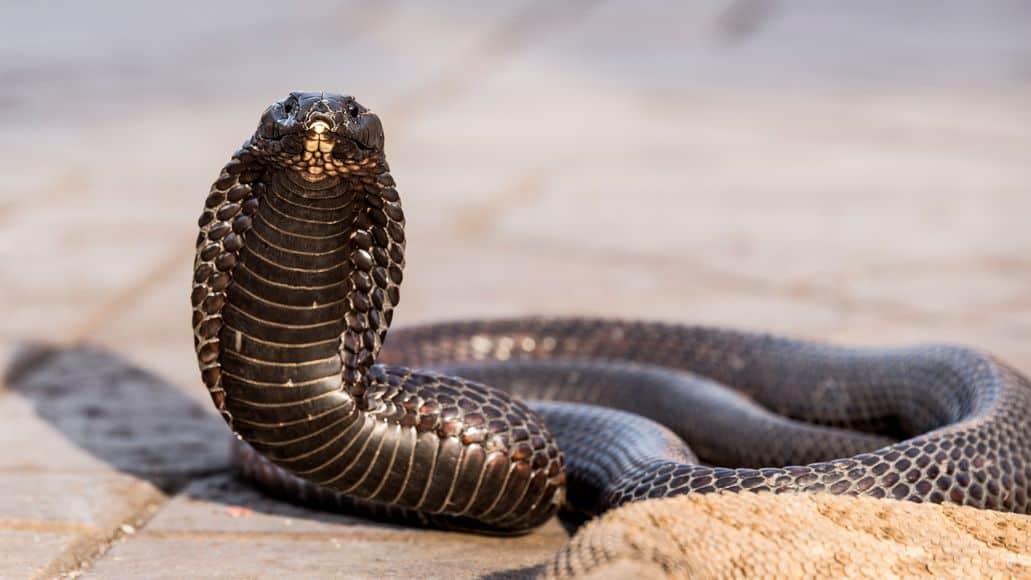
This is a well-known species all over Africa, because it is one of the largest snakes in Africa. The Egyptian Cobra has a flat head that is very distinguishable from the neck. The neck is quite wide, having the ability to expand to form a hood, with the help of the cobra’s cervical ribs.
Another notable feature of the Egyptian Cobra is its round snout, with a broad shape and its round eyes. It is native to parts of North Africa. There are different lengths depending on the species, but the general total length ranges from 3.5 feet to 9.8 feet. That’s the whole body length, including the tail.
Though the Egyptian Cobra may fancy being in the sun at times, it is largely a nocturnal reptile. It prefers to live in habitats created by other animals, such as holes and mounds. At times, it ventures into human habitats.
It typically feeds on birds, smaller reptiles and small mammals. As is common with most cobra species, the Egyptian cobra tries to avoid trouble or confrontation. It normally moves away from disturbing situations. If it feels cornered or repeatedly threatened, it then turns around to strike.
When attacking, the cobra first braces its head and expands its hood with the help of its long cervical ribs. Then it launches to inflict damage on its victim. The Egyptian cobra is not a spitting cobra, like most others. They rely on biting to transmit their venom.
The venom causes a wide range of symptoms. In mild cases the symptoms may be limited to dizziness, abdominal pain, and headache, while in more serious cases, the victim may experience paralysis of the nervous system and respiratory failure.
King Cobra
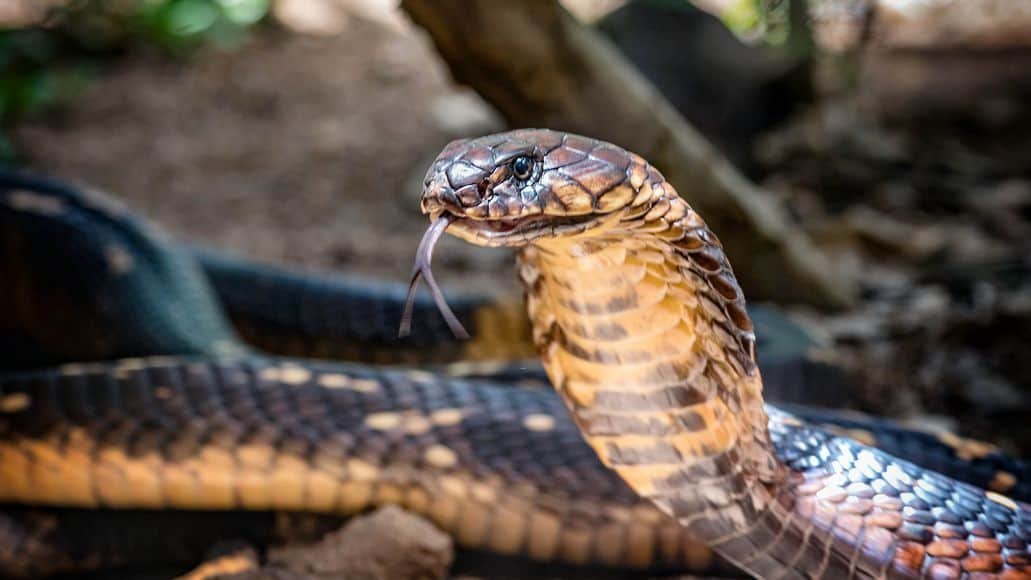
Scientifically speaking, the King Cobra does not really belong to the cobra family. It’s basically in a class of its own.
Native to parts of India and Southeast Asia, the King Cobra has been declared a vulnerable species. It is one of the most venomous snakes in the Philippines, for example. This is mainly due to the deforestation practices that pose real threats to the snake’s natural habitat.
One of the chief distinctive characteristics of the King Cobra is its length. It is the longest of all venomous snakes. The length of a fully developed king cobra is between 10 and 19 feet.
This species has managed to maintain a royal-esque reputation among snakes. Highly feared, and sometimes revered, it is very dangerous, thought it prefers not to confront humans when possible.
The King Cobra is a very sensitive snake, which makes it a keen hunter. It is able to spot prey and track movement up to 100 meters away thanks to several highly tuned organs.
It has sharp eyesight. It also has a forked tongue, which acts as a sense of smell and can detect the prey’s direction.
The information gained from its tongue is massive—the snake only needs to flick its tongue to know the precise direction of its prey.
Finally, its body is highly sensitive to ground vibrations (read “Can snakes hear?” for more on how snakes detect ground vibrations with their inner ears). These factors combine to give an extremely heightened sensitivity.
Despite all of these advantages, there are still a number of animals that kill cobras. Some of them even prey on them for food.
As is common in snakes, the king cobra’s jaws are very flexible. The lower jaws have the ability move independently of the upper jaw.
The lower jaw is made up of several individual bones, which makes it possible for the king cobra to open its mouth wide to swallow its prey whole, even if it is bigger than its head.
King cobras are most active during the day. At night they withdraw to their abode. Reports of snakebites from king cobras are very few and far between. Most reports come from snake handlers.
This species does not transfer venom in every single bite, but in the event of a snakebite, it is advised that you do not wait to find out whether or not you were envenomated. Seek medical help immediately. Untreated king cobra bites have a fatality rate of around 60%.
Black Mamba
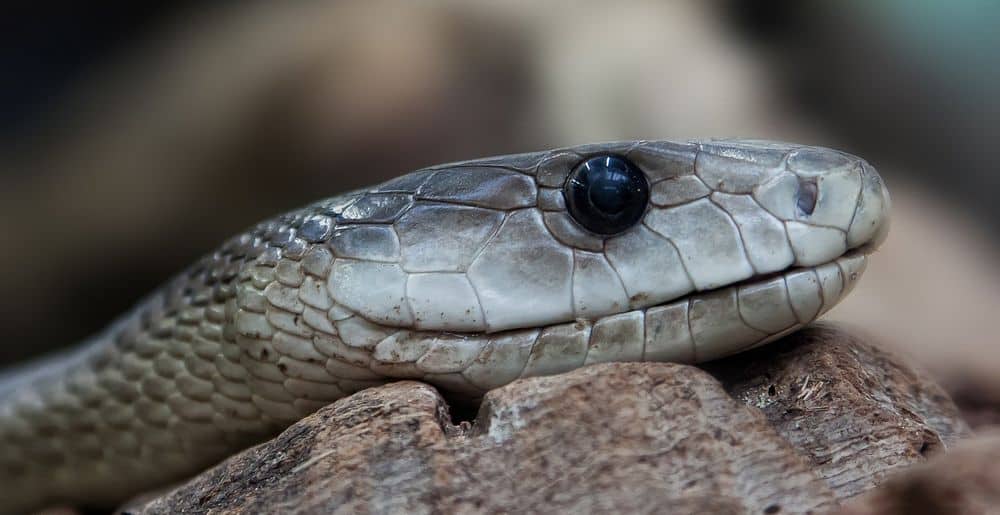
As far as length is concerned, the black mamba is right behind the king cobra. Sub-Saharan Africa is home to most of the world’s black mamba population.
This species is said to get darker as it matures. Younger black mambas are usually brown or grey in color while the older ones are mostly pitch black. The length ranges from 10 to 15 feet.
Black mambas live on the ground and in the trees. They seem to like both equally. They are found across different kinds of vegetation and regions: from tropic forests to rocky areas to Sudan and Sahel savannahs.
Speed in movement is a standout characteristic of the black mamba. It can move as fast as 10 mph on flat surfaces, provided the distance is not long. Very few animals hunt black mambas for food. Their speed makes them a difficult target during a chase.
When a black mamba wants to attack, it hisses while opening its mouth and spreading its neck. It has the ability to bite several times within a few seconds, delivering considerable damage to the victim. It can also launch over a considerable distance, so it does not necessarily need to be so close to biting its victim.
A black mamba attack, if untreated has a very high chance of eventually killing you, because its venom is fast-acting, with symptoms showing up in 15 minutes or less. The Black Mamba is deadly, but it does not attack humans arbitrarily, only if it feels there is a considerable danger.
When on the ground the black mamba moves with its head slightly raised. It prefers holes, mounds, and crevices in rock as its habitat. It tends to bask in the sun for hours in the afternoons, usually using the same location repeatedly.
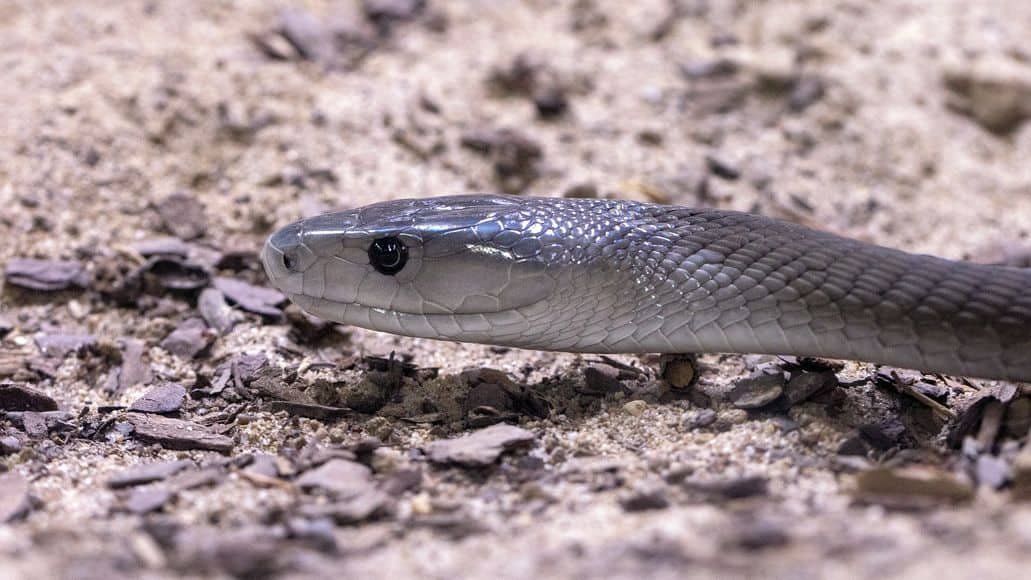
It typically senses danger and feels threatened when an intruder is about 40 meters away. Normally, it would try to retreat or move away, but if its path is blocked, it will strike.
When a mamba preps for an attack, it raises its head such almost half of its whole body length is above the ground. If an attack is launched from this position, it most likely will be targeted at the upper body of the victim, if it’s a human. This makes it much more difficult to prevent the venom from spreading.
The black mamba Is usually portrayed as ever ready to attack and extremely aggressive, which is not true. It only attacks when agitated or cornered.
Deadly Snakes: Final Thoughts
As you may have noticed, all the snakes listed are deadly, but their first instinct when they come in contact with humans is flight, not fight. The snakes would prefer to move out of the way and avoid contact or disturbance.
However, we sometimes inadvertently encroach on their space and, knowingly or unknowingly, pose a threat. They become agitated and bite. The snakes would prefer to reserve their venom for hunting, but when they feel threatened, they’ll also use it to get out of difficult situations.
The point is: they’re rarely looking to kill you, but if they think you’re trying to kill them, they’ll try to kill you first. This is even more true during mating or birthing season.
They can get very irritable then and you would do well to avoid them those periods. Anyone keeping venomous snakes as a pet would do well to remember this.
And yes, there are quite a few highly venomous snakes missing from this list, like the Bathrops Insularis. While this snake is deadly, there are no known fatalities ascribed to it, due to its remote location.
Andrew Watts says
Today i came across an orange snake it was bright orange with distinctive markings it was in very good health and very fast i tried to catch it but it was too fast i saw it in an alley between 2 houses i didnt think about taking a photo but one of the house occupants turned up so i told him he said it was a corn snake as he had kept snakes but how can i be sure it is not venomous and not a corn snake
Gordon Wilson says
You usually know by what kind of snakes live in the area. Is there an orange venomous snake species where you live? If not, it was probably a corn snake. A venomous snake will also have fangs, which a corn snake doesn’t. But best not to get close enough to see the teeth.